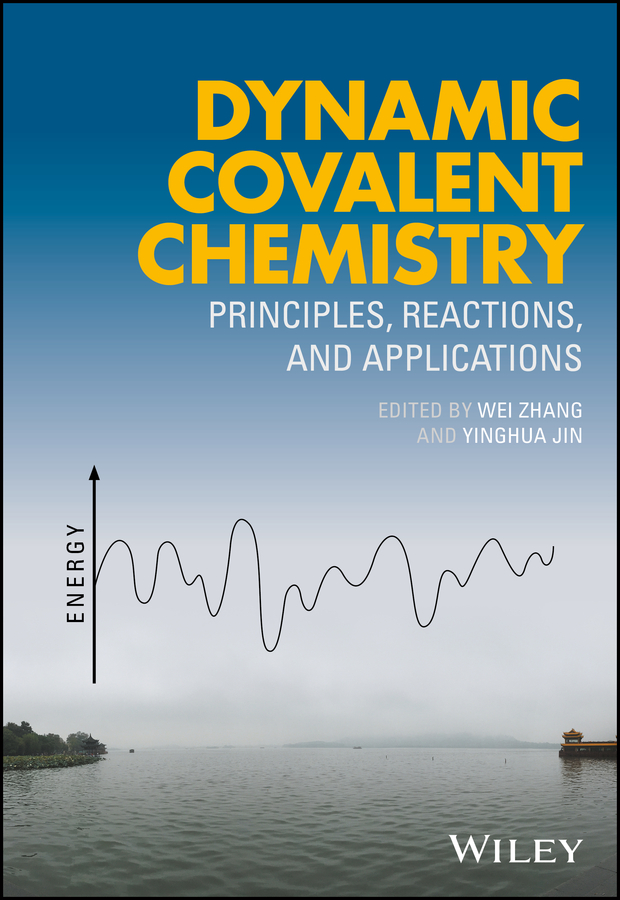Электронная книга: Wei Zhang «Dynamic Covalent Chemistry. Principles, Reactions, and Applications»

|
The first and only exhaustive review of the theory, thermodynamic fundamentals, mechanisms, and design principles of dynamic covalent systems Dynamic Covalent Chemistry: Principles, Reactions, and Applications presents a comprehensive review of the theory, thermodynamic fundamentals, mechanisms, and design principles of dynamic covalent systems. It features contributions from a team of international scientists, grouped into three main sections covering the principles of dynamic covalent chemistry, types of dynamic covalent chemical reactions, and the latest applications of dynamic covalent chemistry (DCvC) across an array of fields. The past decade has seen tremendous progress in (DCvC) research and industrial applications. The great synthetic power and reversible nature of this chemistry has enabled the development of a variety of functional molecular systems and materials for a broad range of applications in organic synthesis, materials development, nanotechnology, drug discovery, and biotechnology. Yet, until now, there have been no authoritative references devoted exclusively to this powerful synthetic tool, its current applications, and the most promising directions for future development. Dynamic Covalent Chemistry: Principles, Reactions, and Applications fills the yawning gap in the world literature with comprehensive coverage of: The energy landscape, the importance of reversibility, enthalpy vs. entropy, and reaction kinetics Single-type, multi-type, and non-covalent reactions, with a focus on the advantages and disadvantages of each reaction type Dynamic covalent assembly of discrete molecular architectures, responsive polymer synthesis, and drug discovery Important emerging applications of dynamic covalent chemistry in nanotechnology, including both material- and bio-oriented directions Real-world examples describing a wide range of industrial applications for organic synthesis, functional materials development, nanotechnology, drug delivery and more Dynamic Covalent Chemistry: Principles, Reactions, and Applications is must-reading for researchers and chemists working in dynamic covalent chemistry and supramolecular chemistry. It will also be of value to academic researchers and advanced students interested in applying the principles of (DCvC) in organic synthesis, functional materials development, nanotechnology, drug discovery, and chemical biology. Издательство: "John Wiley&Sons Limited"
ISBN: 9781119075714 электронная книга Купить за 13512.9 руб и скачать на Litres |
Другие книги схожей тематики:
| Автор | Книга | Описание | Год | Цена | Тип книги |
|---|
См. также в других словарях:
Chemistry — For other uses, see Chemistry (disambiguation). Chemistry is the science of atomic matter (that made of chemical elements), its properties, structure, comp … Wikipedia
Supramolecular chemistry — refers to the area of chemistry that focuses on the noncovalent bonding interactions of molecules. [cite journal | author=Lehn JM | title=Supramolecular chemistry | journal=Science | volume=260 | issue=5115 | year=1993 | pages=1762–3 |… … Wikipedia
Chemical biology — is a scientific discipline spanning the fields of chemistry and biology that involves the application of chemical techniques and tools, often compounds produced through synthetic chemistry, to the study and manipulation of biological systems.… … Wikipedia
Molecular dynamics — (MD) is a computer simulation of physical movements of atoms and molecules. The atoms and molecules are allowed to interact for a period of time, giving a view of the motion of the atoms. In the most common version, the trajectories of molecules… … Wikipedia
Polymer — Appearance of real linear polymer chains as recorded using an atomic force microscope on surface under liquid medium. Chain contour length for this polymer is 204 nm; thickness is 0.4 nm.[1] A polymer is a large molecule (macromolecule … Wikipedia
Enzyme — Biocatalyst redirects here. For the use of natural catalysts in organic chemistry, see Biocatalysis. Human glyoxalase I. Two zinc ions that are needed for the enzyme to catalyze its reaction are shown as purp … Wikipedia
